The ruins of a luxurious winery were found at the Villa Quintilii in Rome (8 photos)
During the excavations at the Quintilian villa, located on the ancient Appian Way, archaeologists have found a 2000-year-old wine complex prescription. Everything indicates that it was an imperial winery, where guests were not only fed, but also entertained. 
Villa Quintilius is located on the 5th mile of the Appian Way. Once a huge estate of 24 hectares belonged to brother consuls from the powerful Quintilian clan. But coming to power Emperor Commodus, executing the brothers, took away all their wealth to hands (this happened in 182/3 AD). Since then the villa has been use of the Roman emperors. 
Bust of Emperor Commodus. Munich Glyptothek
This place has long been known for its decorative architecture, in including colored marble tiles, high quality sculpture, restored over the past 400 years, and a large thermal complex.
Less well known is the huge circus for chariot racing and gladiator fights built during the reign of Commodus. 
View of the excavated winery at Villa Quintilius
In 2017-18, when trying to find the starting gate of the circus, the first traces of a unique winery were found. 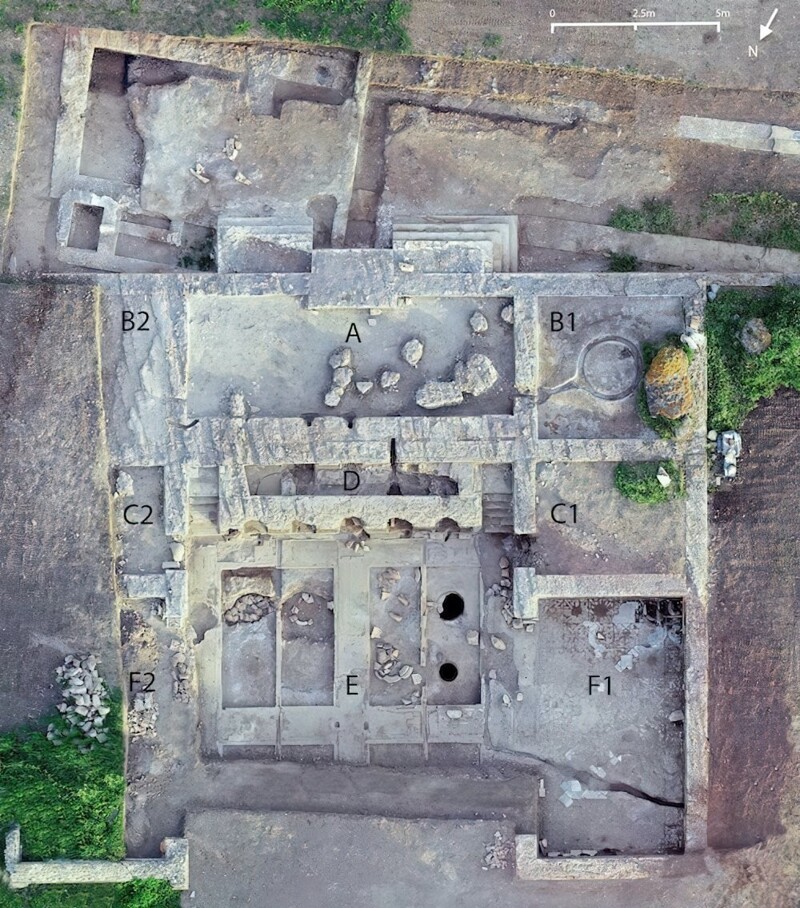
Aerial view of the excavated winery at Villa Quintilius. The production areas are at the top (A–D) and the cellar (E) with adjoining canteens (F) in the lower half of the image
This large brick complex was located above the starting the gates of the circus, built in the time of Commodus. Stamp on a brick says that the winery appeared (or expanded) at the time Gordian III (reigned 238–244 AD). 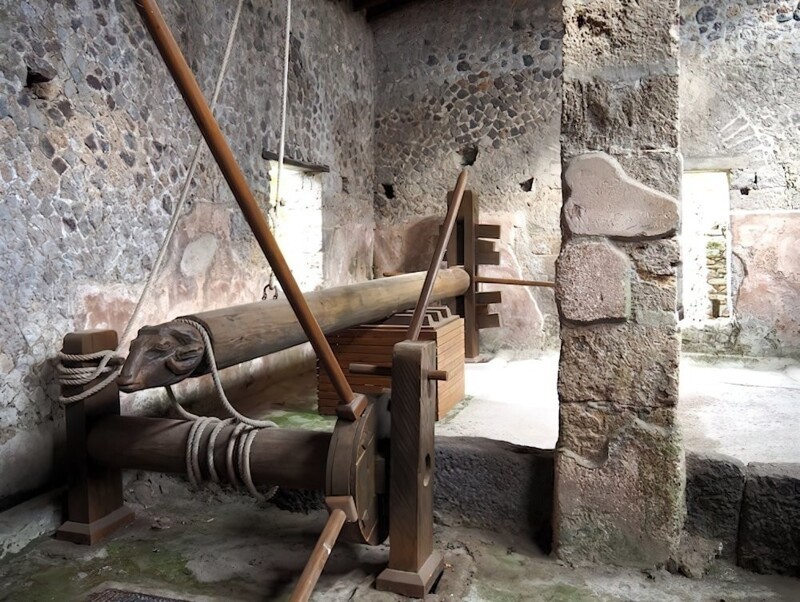
Reconstructed ancient Roman wine press at the Villa of the Mysteries, Pompeii, Italy
The winery has an area for pressing grapes, where there are two mechanical lever presses, a long rectangular vat for defending grape must and a wine cellar with huge stakes - clay amphorae for storing wine, dug into the earthen floor. 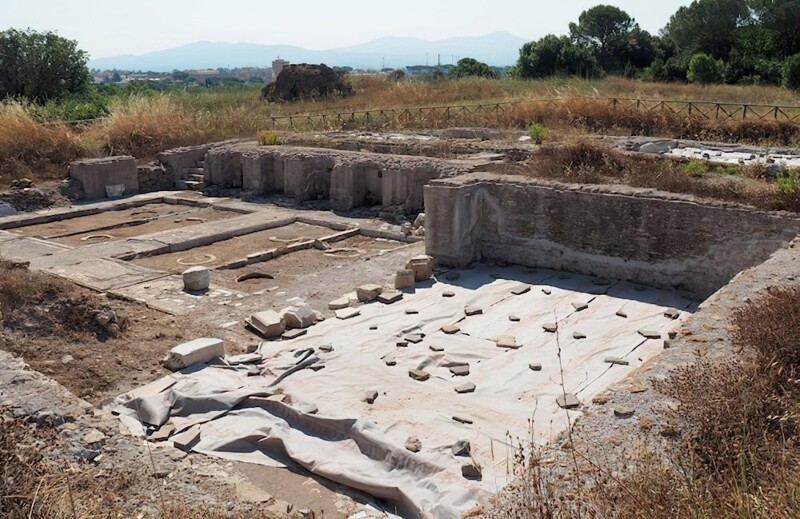
The wort from two presses flowed into three fountains: they were in semicircular niches built into the wall of the courtyard. Poured out of fountains, the wort flowed through special channels into jugs located in cellar. There were also two external fountains from which water flowed. 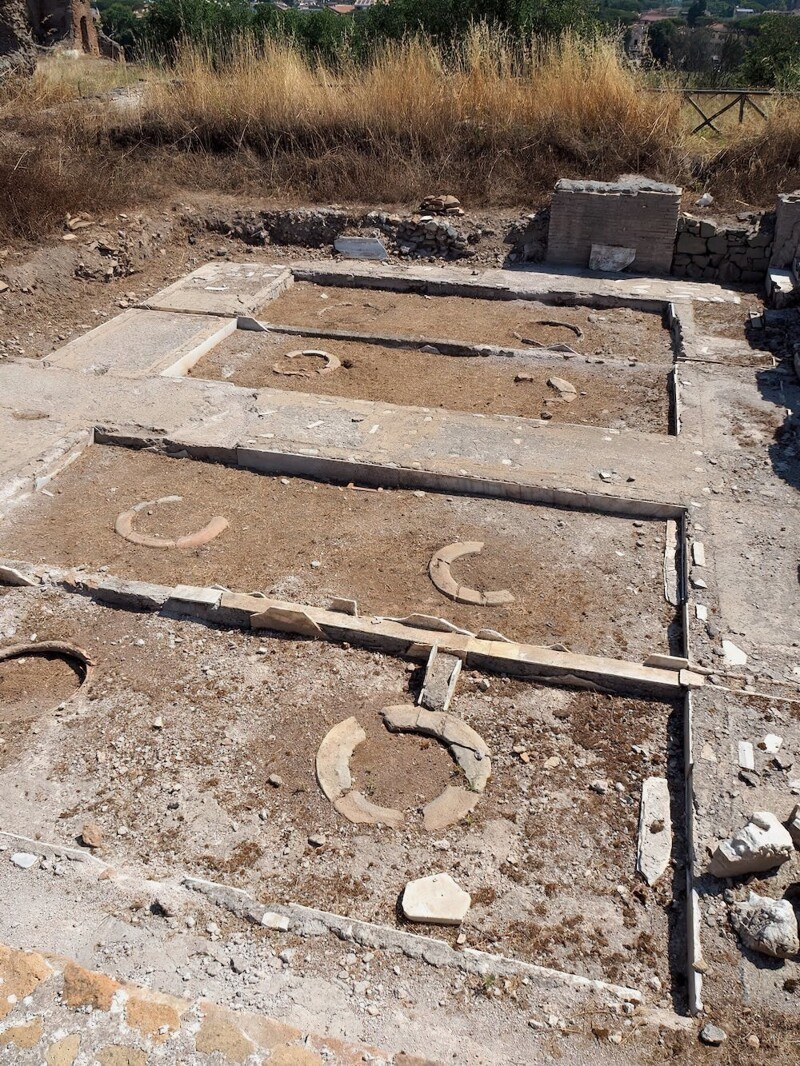
Basement with marble-lined distribution channels and eight buried earthenware jugs, restored to their former place
Functionally, this winery is no different from others. ancient Roman wineries, however, judging by the finishing materials, it was incredibly luxurious. Stairs and floors were not made of concrete with filler of shards, and lined with valuable varieties of marble, brought from distant countries. 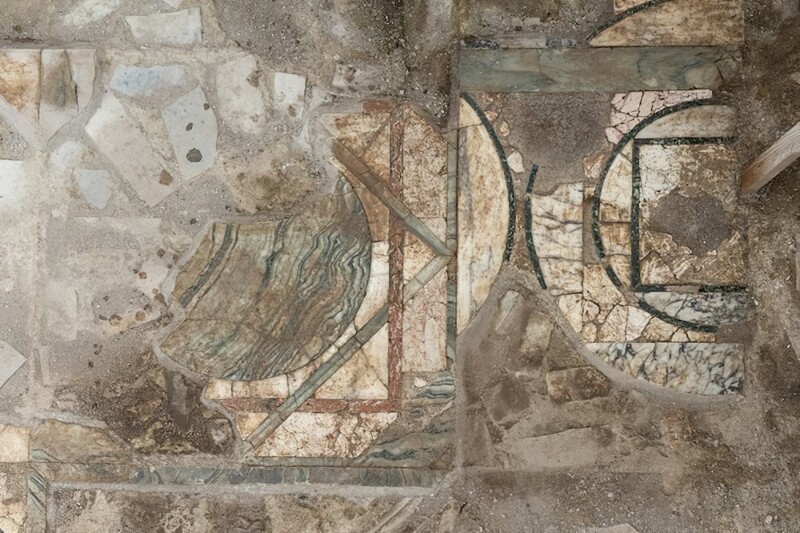
Geometric colored marble floor tiles found in one of the banquet halls
The production area is organized in such a way as to suit spectacle for guests. The guests rested in the halls for feasts, located along sides of the central courtyard of the winery, and these halls are also magnificent and very expensively decorated. Archaeologists believe that the wine complex united in itself both food for the body, that is, the production of wine, and food for the soul, that is, a theatrical performance.
The results of the study were published in the journal Antiquity.





























